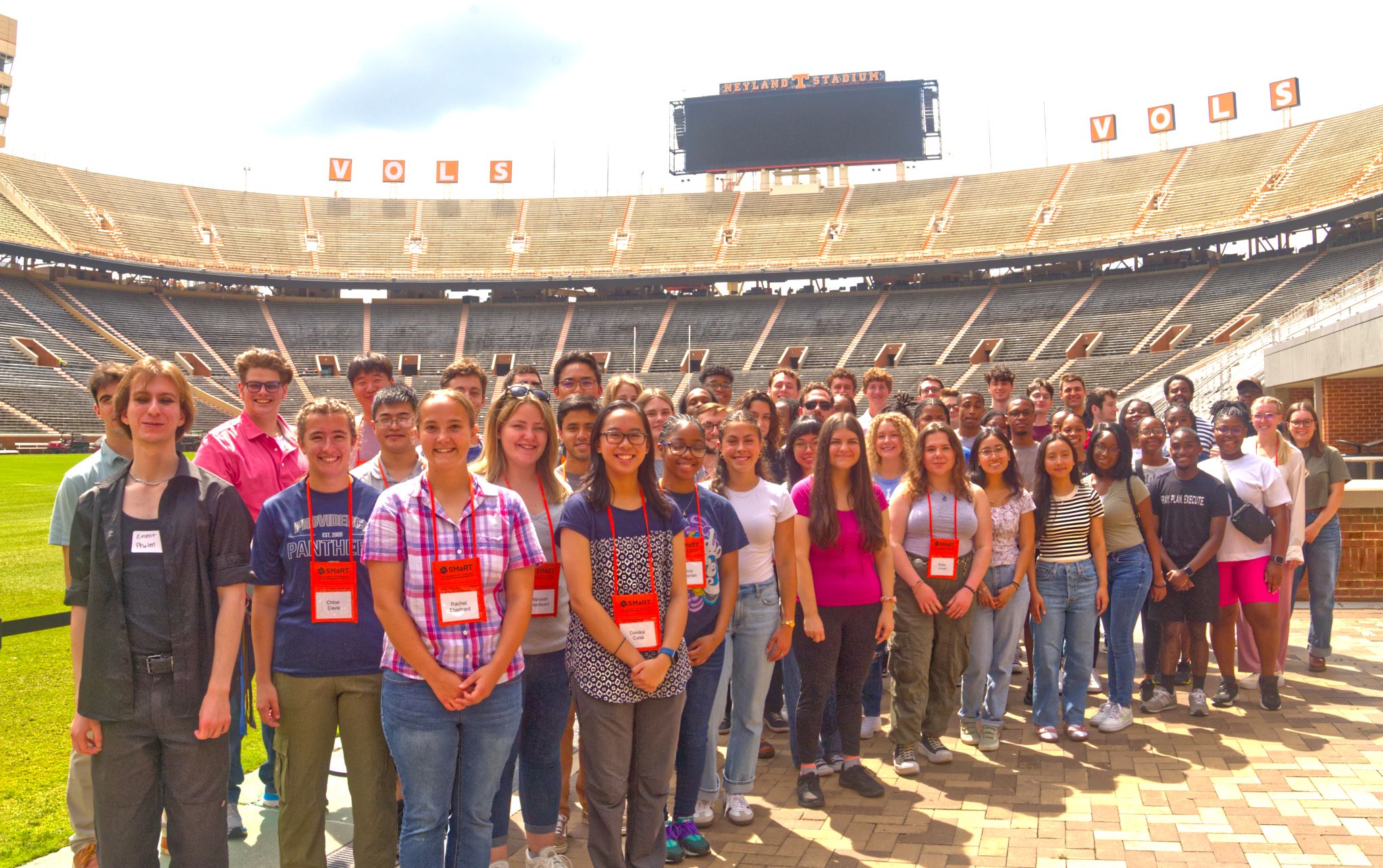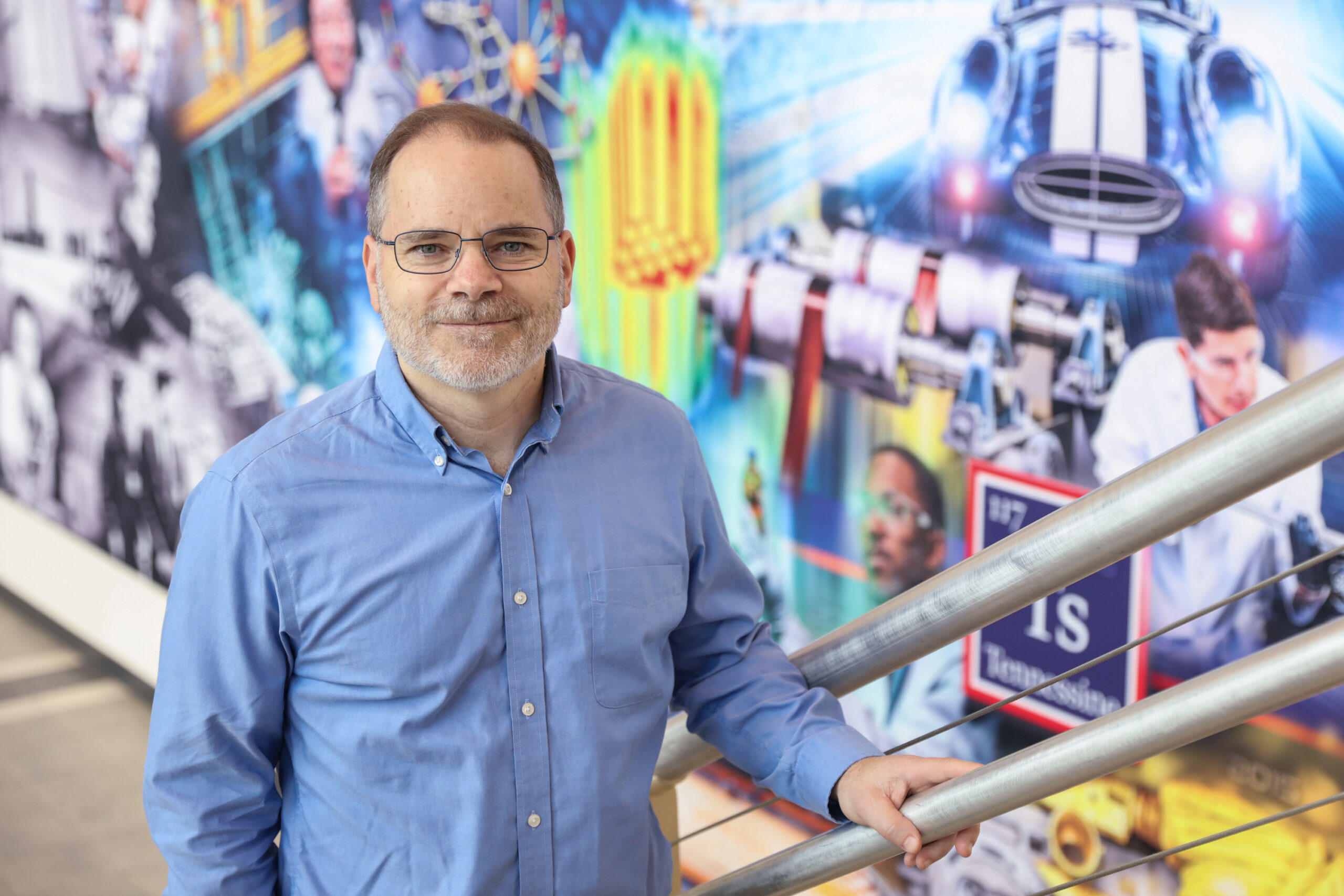Designing New Materials for Energy, Sustainability, Additive Manufacturing
UT Knoxville Chemistry Professor Mike Kilbey received one of UT-ORII’s first seed grants, right after the institute launched. That funding, renewed for 2022, was used to bring together a team of UT faculty, Oak Ridge National Laboratory researchers and PhD students specializing in polymer synthesis, computation and machine learning.
Recently, Kilbey and his team partnered with researchers from Penn State University to receive a $500,000 National Science Foundation Future Manufacturing seed grant and they have the potential to receive another $5 million in NSF grant funding.
Kilbey’s research focuses on understanding the structure and molecular design of polymers and on creating new materials for energy, sustainability and improved additive manufacturing.
Kilbey likens his fundamental research on polymers to the so-called “butterfly effect” where a small change in one place may have a long-term impact on another place at a later time.
Although its impact may not be immediate or apparent, it contributes to the body of science that will help build a better future.
“We have used our expertise to accelerate the design and innovation of polymeric materials,” he said. “The strength of the effort is based on bringing people from different disciplines together to expand the scope of activities and gain synergy from those interactions.”
One of the team’s projects is focused on designing polymers that can be used in sensors or electronics.
While many plastics don’t conduct electricity very well, some polymeric materials do. And plastic electronics have many benefits: they are lightweight, can be produced in large scale at a low cost, and reduce the need to use precious metals.
A second focus of the seed project involves polymers that, in the form of membranes, can be used to separate carbon dioxide. Such materials could benefit the environment by preventing the release of carbon dioxide from processes that burn fossil fuels for energy.
Another project that Kilbey directs focuses on additive manufacturing, or 3D printing.
“In polymeric additive manufacturing, one of the major drawbacks is that the produced materials are weaker than if they’d been made by traditional processes,” Kilbey said.
He and his students are designing polymers and processing techniques that enhance the material’s toughness.
Through their research, Kilbey and his team are providing building blocks for future innovation.
“We’re not making devices, but we are providing that critical fundamental science,” he said. “We put it out there into the world and years later, you start to see benefits.
“Discovery and innovation drive us. We know that we are just part of a larger community of researchers across the globe pursuing such ideas. The fundamental knowledge that my students and colleagues, and I contribute is important; we are providing enabling pieces that will help to improve society and the world around us.”
Kilbey earned his bachelor’s degree in chemical engineering from the University of Wisconsin and his doctorate in chemical engineering from the University of Minnesota.
In 2007, while on sabbatical from his faculty position at Clemson University, he came to ORNL to learn neutron scattering methods applied to polymeric materials. At the end of that year, he stayed on as a UT-ORNL joint faculty member. He’s since returned to full-time academia and is a joint faculty member of the chemistry and chemical and biomolecular engineering departments.




